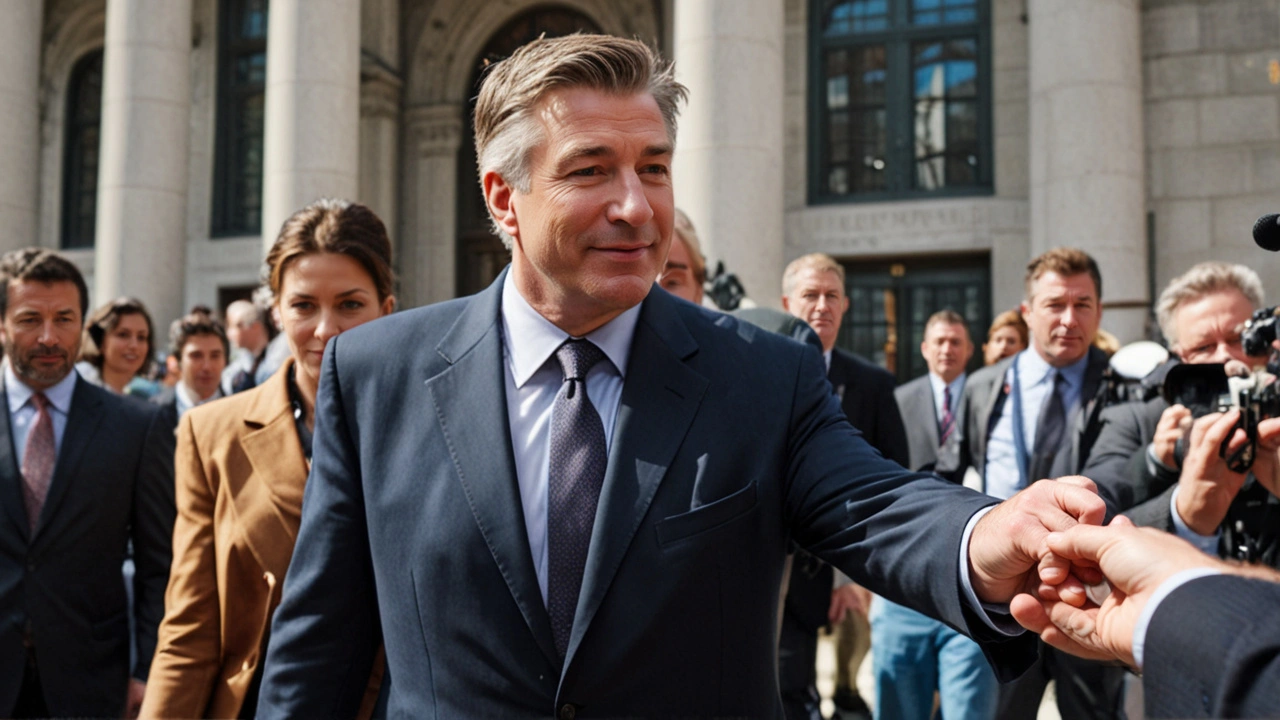Alec Baldwin 'Rust' Trial Dismissal: Unveiling the Collapse of the Prosecution's Case and Key Moments

Introduction
The trial of Alec Baldwin, which gripped the public due to its dramatic implications for Hollywood, has come to an unexpected halt. Baldwin had been charged with involuntary manslaughter following the tragic death of cinematographer Halyna Hutchins on the set of 'Rust.' The shocking incident brought a storm of scrutiny over industry practices and film set safety. The case itself took several surprising turns, culminating in a decisive dismissal that has left both legal analysts and the public pondering its ramifications.
The Incident
The tragic event unfolded on October 21, 2021, on the set of the western film 'Rust.' During a rehearsal, a prop gun held by Alec Baldwin discharged, fatally wounding Halyna Hutchins and injuring director Joel Souza. The news of Hutchins's death sent shockwaves through the entertainment industry, raising immediate questions about safety protocols and the handling of prop weapons. It was a somber reminder of the potential dangers inherent in film production.
Initial Charges and Legal Proceedings
In the wake of the tragic shooting, Baldwin, along with other crew members, faced intense scrutiny. Soon after, Baldwin was charged with involuntary manslaughter. Prosecutors argued that he bore significant responsibility for Hutchins’ death, asserting that proper safety measures were not followed. The defense, on the other hand, maintained that Baldwin was unaware of the live ammunition in the gun and argued that he had relied on the assurances of others responsible for on-set safety.
The case rapidly drew the attention of media outlets and sparked widespread debate. Legal experts weighed in on the potential outcomes, and public opinion was deeply divided. The courtroom became a battleground not only for Baldwin and the prosecution but also a theater for larger issues concerning Hollywood's work environment.

Pivotal Evidence and the Prosecution’s Setback
As the trial progressed, it became clear that the prosecution’s case was not as airtight as initially thought. The defense unearthed pivotal new evidence, particularly concerning the ammunition involved in the shooting. This evidence suggested discrepancies in how the ammunition had been handled and raised doubts about the thoroughness of the prosecution's investigation.
Crucial revelations came to light when the defense pointed out that the prosecution had failed to disclose important information. The newly surfaced evidence indicated that there were fundamental flaws in the management and documentation of prop ammunition on the set. The defense argued that this oversight was more than a mere procedural misstep; it directly impacted the fairness and integrity of the trial.
The Judge’s Ruling
In light of these revelations, Baldwin's defense team pressed for the dismissal of the charges. The judge, after reviewing the new evidence and the arguments put forth, concurred with the defense. Emphasizing the necessity of fairness and transparency in legal proceedings, the judge ruled to dismiss the case with prejudice. This meant that Baldwin could not be retried on the same charges, bringing a definitive end to the legal battle.
The judge's decision was a significant moment in the legal proceedings. It underscored the importance of prosecutorial diligence and the requirement that all evidence be disclosed to ensure just outcomes. The ruling also brought a sense of relief to Baldwin and his supporters, who had maintained his innocence from the outset.
Baldwin’s Stance and Public Reaction
Throughout the ordeal, Baldwin consistently proclaimed his innocence. He expressed deep sorrow over Hutchins' death and insisted that he had relied on the professionals in charge of weapon safety on the set. His defense team echoed these sentiments, highlighting the systemic issues within the production’s safety protocols.
The public reaction to the trial's dismissal has been mixed. Some see it as a vindication of Baldwin's stance, while others believe it leaves many questions unanswered. The broader discourse has shifted towards evaluating safety standards within the film industry and the accountability of those in supervisory roles.

Implications for the Film Industry
The tragic accident on the 'Rust' set and the subsequent legal battle have cast a long shadow over Hollywood. It has prompted an urgent reassessment of safety measures during film production, particularly in the use of prop weapons. Industry professionals and labor unions have called for stricter regulations to prevent similar incidents in the future.
Enhanced Safety Protocols
One of the lasting impacts of this case may well be the implementation of more rigorous safety protocols on set. Calls for mandatory safety training for all cast and crew involved with firearms are growing louder. Some propose that only specialized armorers should handle prop weapons, ensuring a higher standard of care and expertise.
Accountability and Oversight
Another critical discussion point is the accountability of holding individuals and production companies responsible for lapses in safety. The incident has demonstrated that failures in oversight can have devastating consequences. There is a pressing need for more robust mechanisms to hold those responsible accountable, ensuring that safety is never compromised for the sake of expedience.
Conclusion
The abrupt end to Alec Baldwin's trial has been a moment of relief for some and a point of contention for others. The case has highlighted significant issues within the film industry concerning safety and accountability. While the legal battle is over, the discussions it has sparked about industry practices are likely to continue for some time. Hutchins' untimely death remains a somber reminder of the importance of stringent safety measures, and her legacy may lead to lasting changes that protect those who bring stories to life on screen.
Write a comment